Multi-Family Construction Costs
Calculate Cost To Construct New Home
For developers in the multifamily housing industry, the management of construction expenses is a matter of paramount importance at every stage of a project. These costs have been a major source of concern, especially with the substantial increases,due to pandemic-related disruptions, labor shortages, and supply chain issues.
The National Multifamily Housing Council anticipates that construction costs will continue to rise, albeit at a considerably slower rate, which is a positive development.
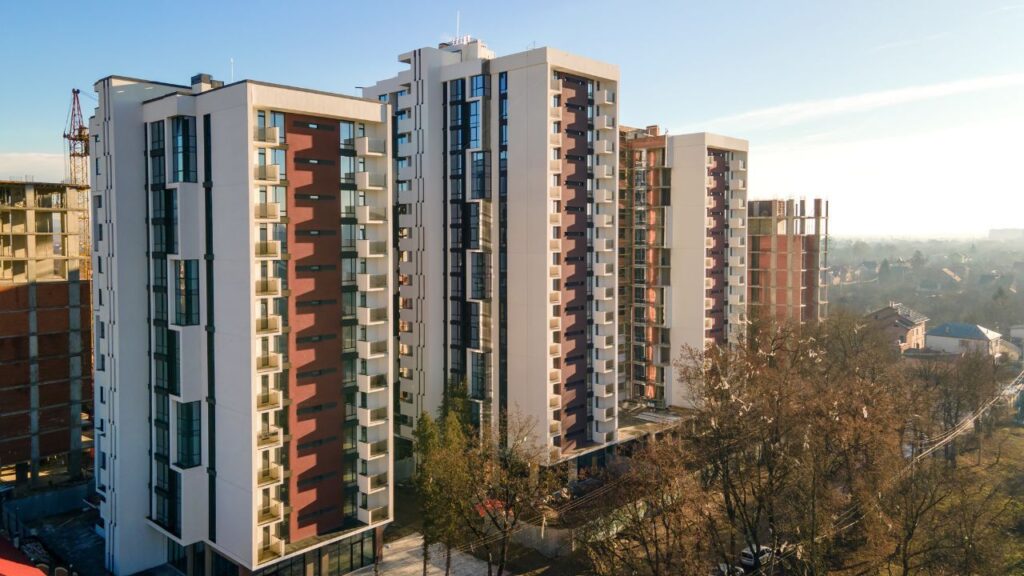
Nevertheless, because construction costs can be elusive and potentially escalate significantly during a project, it is imperative to obtain a reliable estimate to gain a clear understanding of the precise amount you need to allocate in your construction budget.
The increasing Apartment Complex Construction Costs
The multifamily construction sector is currently contending with significant challenges primarily triggered by unexpectedly high interest rates and a rapid upsurge in construction expenses. The affordable housing segment, in particular, has been severely affected, experiencing an average cost escalation of approximately 30%. Projects that previously relied on low-income housing tax credits since 2019 are now confronting unanticipated financial shortfalls, prompting many to search for additional funding avenues to bridge these deficits.
In response to these adverse circumstances, developers have proceeded with caution, adopting a more discerning approach to their endeavors. In light of the mounting costs, there has been a noticeable shift towards fostering collaborations and partnerships, particularly with local governments offering favorable financing terms. However, even with some state Housing Finance Agencies (HFAs) extending supplementary credits or soft funding, such support often falls short of fully addressing the financial challenges, underscoring the industry’s imperative to be adaptable and to seek innovative solutions.
How Construction and Development Costs Are Assessed?
During the initial phases of a project, both multifamily and commercial developers typically rely on historical data derived from previous development endeavors. They strive to factor in similarities and differences in their estimates, much like an appraiser would compare properties using the sales comparison approach. However, due to the ever-changing economic landscape, determining an exact budget can be challenging, particularly in the project’s early stages.
This challenge arises, in part, because developers, contractors, and architects frequently employ simplified do-it-yourself (DIY) cost estimation methods during the project’s initial phases. In fact, readily available “plug and play” Excel templates for construction cost estimates can be easily found online. These templates can provide developers with a reasonably accurate ballpark cost estimate, given that they input precise information. While DIY spreadsheets serve well for estimation purposes, the majority of larger projects eventually enlist the services of a professional construction cost estimator.
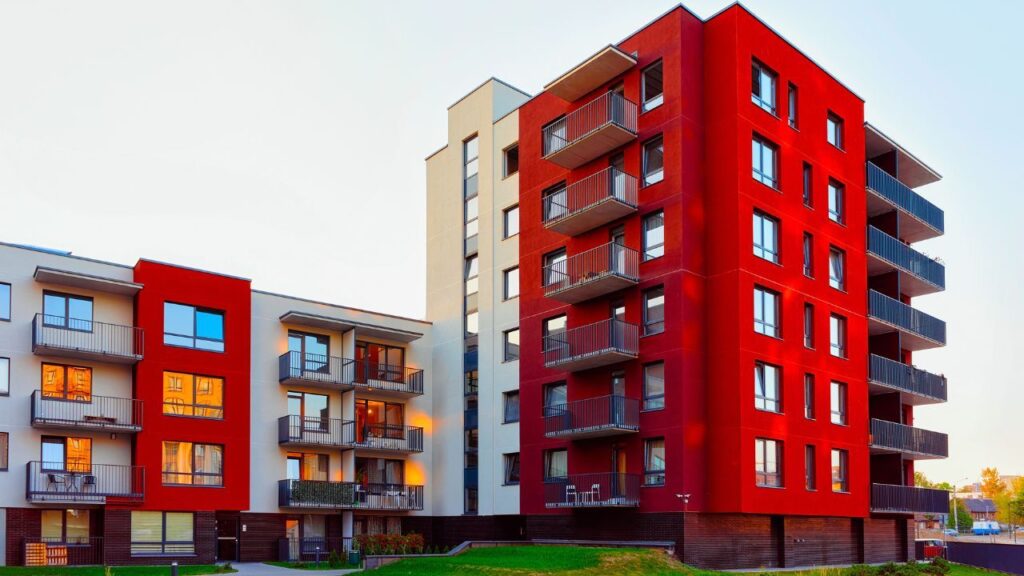
For a comprehensive view of construction costs for an entire apartment building, refer to the table below. These numbers reflect nationwide averages, and it’s important to note that in major primary markets such as Manhattan, San Francisco, Seattle, and similar areas, you can anticipate significantly higher costs.
Hard vs. Soft Costs for Multifamily Construction
When you’re in the process of estimating or analyzing multifamily construction expenses, it’s crucial to discern the contrast between hard and soft costs. Hard costs encompass all expenditures associated with the tangible construction of a building, encompassing tasks like laying foundations, roofing, landscaping, and the installation of appliances, among other physical elements. On the other hand, soft costs usually pertain to intangible expenses, such as permit fees, architectural expenses, legal fees, construction loan interest, and similar financial outlays.
On average, approximately 37% of a property’s development costs are attributed to hard construction costs, while 24% are accounted for by soft costs. An additional 19% can be traced back to land acquisition costs, which may include demolition expenses if required. The remaining 25% constitutes the equity returns that benefit investors.
In many scenarios, developers oversee apartment and condominium construction projects for a specified fee but do not supply the majority of the capital themselves. Instead, they frequently collaborate with a consortium of investors who provide the majority of the development funding. The fees charged by developers can vary significantly, but they are commonly set at around 5% of both soft and hard development costs. If the developer is also responsible for acquiring the project’s land, they might levy an extra acquisition fee, typically ranging from 1% to 2% of the purchase cost.
Get A Multi-Family Building Construction Cost Estimator
According to the most recent cost estimates, multifamily apartment construction currently costs between $84,500 to $109,000 per unit. This estimate uses contractor fees of between $95 and $220 per square foot (psf) to provide a reasonable range between the most and least expensive markets, as the average contractor fee in the U.S. is about $145
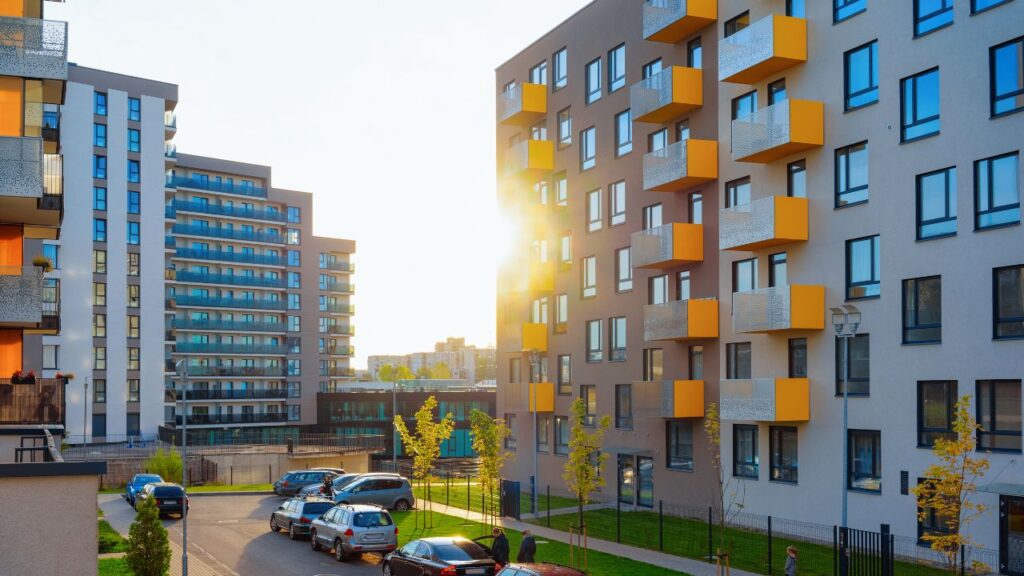
The Actual Costs of Multifamily Development
The cost of multifamily development can vary significantly based on factors such as the property’s location, size, and the amenities it offers. In 2024, the average construction cost for a multifamily property in the United States is approximately $350 per square foot. To put this into perspective, constructing a 100-unit apartment complex with an average unit size of 1,000 square feet would require an investment of around $35 million.
It’s important to note that location plays a pivotal role in these cost variations. For a more precise estimate, please refer to the following table:
Location | Average Cost per Square Foot |
National Average | $400 |
Major Primary Markets (e.g., Manhattan, San Francisco) | $500+ |
Secondary Markets (e.g., Phoenix, Orlando) | $300 – $400 |
Tertiary/Rural Markets | $250 – $350 |
Keep in mind that when calculating square footage, you should account for unusable space within the property. Unusable space includes areas that are not rentable or entirely non-functional, such as amenity spaces, lobbies, elevator shafts, stairwells, and the like. Typically, this non-rentable space constitutes approximately 15% of the total space in a multifamily building. However, for precise figures, it’s advisable to consult your specific development plans.
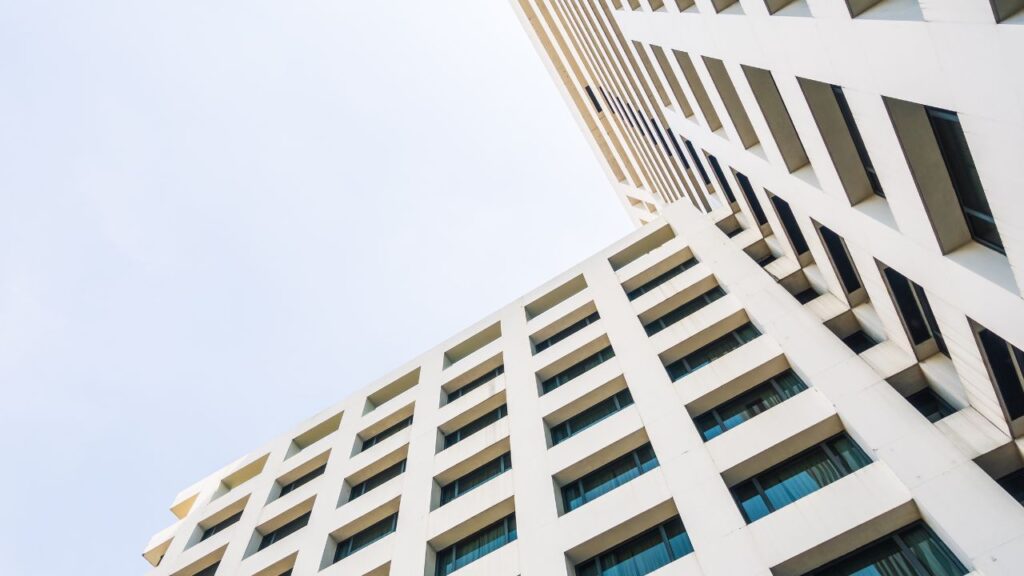
Apartment Complex Size | Estimated Construction Cost |
4 units | $1.5 – $2.0 million |
8 units | $2.5 – $3.5 million |
10 units | $3 – $5 million |
12 units | $4.0 – $5.5 million |
20 units | $7 – $10 million |
50 units | $18 – $25 million |
200 units | $50 – $120 million |
Download Template For Construction Project Breakdown
- Materials list updated to the zip code
- Fast delivery
- Data base of general contractors and sub-contractors
- Local estimators
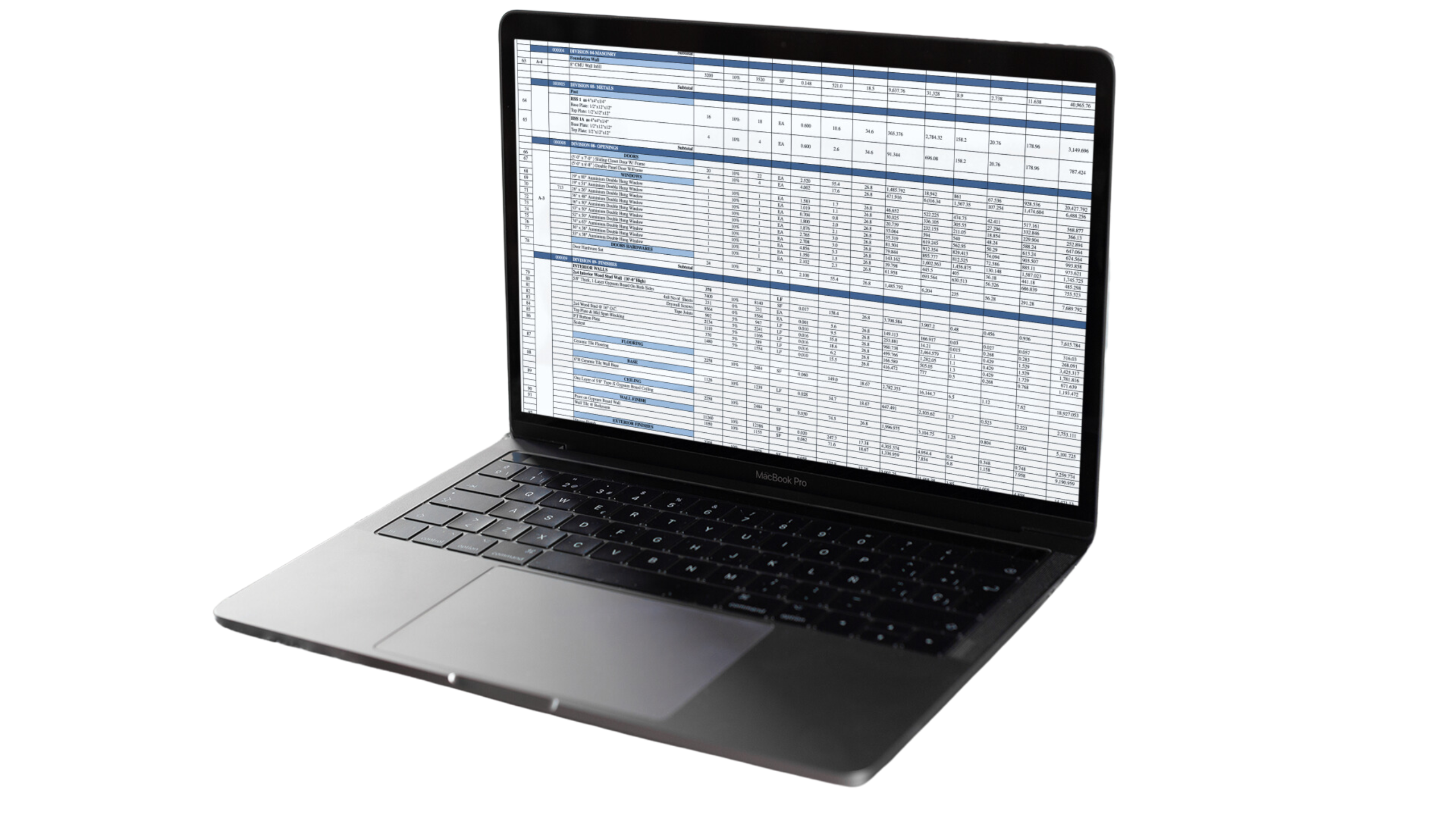
The Role of Architects in Multifamily Development
While contractors oversee and manage the physical construction of a property, architects are tasked with developing comprehensive plans for the entire project. In many respects, the quality of a building is inherently tied to the quality of its design, making the selection of a skilled architect a matter of paramount significance. The responsibilities undertaken by an architectural firm encompass:
- Crafting an initial project plan and budget.
- Formulating a task list and project outline.
- Drafting schematic designs and floor plans.
- Assisting developers in assessing contractor proposals and in the contractor selection process.
- Reviewing architectural plans with relevant agencies and procuring necessary permits, which may include general construction permits (some of which may subsequently fall within the contractor’s purview).
- Collaborating with structural engineers and planning agencies.
- Overseeing the contractor’s progress and managing payment requests.
The Role of Contractors in Multifamily Development
Selecting the right contractor is absolutely crucial, as they bear the day-to-day management responsibilities of the construction site. Opting for a capable contractor can lead to a smooth project execution, and assuming your initial construction cost estimate was accurate, it should stay within budget. On the flip side, making a poor choice can result in significant delays and cost overruns—this can be particularly problematic since most multifamily development projects rely on construction loans, which typically have a stringent repayment schedule.
In general, a contractor’s duties encompass:
- Sourcing and procuring all necessary materials and services for the entire construction process.
- Securing all pertinent construction and utility permits.
- Providing guidance to the owner/developer and the architect on strategies to reduce costs and shorten project timelines while maintaining or enhancing quality.
- Selecting, hiring, and overseeing subcontractors.
- Ensuring a thorough cleanup of the entire property once construction is complete.

Contractors typically bear the responsibility of procuring and installing all structural components and attending to various administrative tasks. These duties typically encompass:
- Bath fixtures, plumbing fixtures, plumbing rough-in, and connections.
- Cabinets, countertops, and integrated appliances.
- HVAC systems and insulation for both the building and individual units.
- Flooring materials, including carpets.
- Exterior finishes and trim.
- Arranging insurance and overseeing site/property cleanup.
- Handling permits, utility work, and providing plans and specifications for permitting.
- Installation of lighting fixtures, painting, and interior wall finishes.
- Installation of doors, windows, roofing, and wiring.
- Managing rough and finish carpentry along with hardware.
- Overseeing property excavation, foundation work, pier installations, and flatwork.
The Importance of Understanding Multifamily Construction Costs
Whether you intend to actively engage in an extensive real estate development endeavor or prefer a passive investment approach in apartment construction or refurbishment, having a firm grasp of multifamily construction costs is indispensable.
While these costs can significantly differ based on location, having an understanding of both national and local averages for expenses related to contractors, subcontractors, architects, materials, and other facets of the project is vital. It ensures that you avoid overpaying significantly for any specific aspect of your project. Equally important is the ability to assess that you are not aligning your investments with a developer who doesn’t prioritize effective budget management.
Get 5 New Leads in the Next 7 Days With Our System
- Multi-Family Building
- Hotel Building
- Hospital Building
- Warehouse Building
- High-Rise Building
- Shopping Complex
Conclusion
Multifamily construction costs have been a central concern for developers in the housing industry, accentuated by significant increases due to pandemic-related disruptions and supply chain challenges. While the National Multifamily Housing Council foresees a slower rate of cost escalation in 2024, the need for accurate cost estimates remains crucial. Developers have responded with caution, fostering collaborations and partnerships in the face of challenges like high interest rates. It is clear that a deep understanding of both hard and soft costs is vital, as well as the role architects and contractors play in the development process. Location also plays a significant role in cost variations. Overall, a comprehensive grasp of multifamily construction costs is essential for sound real estate development and investment decisions, ensuring effective budget management and reducing the risk of overruns and delays.
FAQs for Multifamily Construction Costs
As of 2024, the average cost for multifamily construction in the United States is approximately $350 per square foot. However, costs can vary depending on location and project size.
Construction costs in the multifamily sector experienced significant increases due to pandemic-related disruptions, labor shortages, and supply chain challenges. The National Multifamily Housing Council anticipates that these costs will continue to rise in 2024, although at a slower pace.
Hard costs refer to expenses directly related to the physical construction of a building, such as foundation, roofing, landscaping, and appliances. Soft costs are intangible expenses, including permit fees, architectural costs, legal fees, construction loan interest, and similar items.
You can start with historical data and utilize cost estimation templates, but for larger projects, it’s advisable to consult with a professional construction cost estimator. They can provide a more precise budget estimate before commencing construction.
On average, about 37% of development costs are attributed to hard construction costs, 24% to soft costs, and 19% to land acquisition costs. The remaining 25% goes to investors as equity returns.
Architects are responsible for creating detailed plans for the entire development, including initial plans, schematic designs, and floor plans. They also collaborate with structural engineers and assist in obtaining necessary permits. Architects contribute to effective budgeting by working closely with developers.
Contractors are responsible for day-to-day construction site management, including sourcing materials, securing permits, and supervising subcontractors. They also advise on cost reduction and quality improvement, oversee property cleanup, and ensure the project stays on schedule and within budget.
Construction costs can vary significantly by location. Major primary markets like Manhattan and San Francisco tend to have higher costs, while secondary and tertiary/rural markets may have lower construction costs. It’s essential to consider location when estimating construction expenses.
Unusable space refers to areas within the property that are not rentable or entirely non-functional, such as amenity spaces, lobbies, elevator shafts, and stairwells. Typically, around 15% of the total space in a multifamily building falls into this category. It’s important to factor in unusable space when estimating construction costs accurately.
Understanding construction costs is essential for ensuring that you do not overpay for any aspect of your project and for making informed investment decisions. It also helps you align your investments with developers who prioritize effective budget management, reducing the risk of cost overruns and delays.
Google Reviews

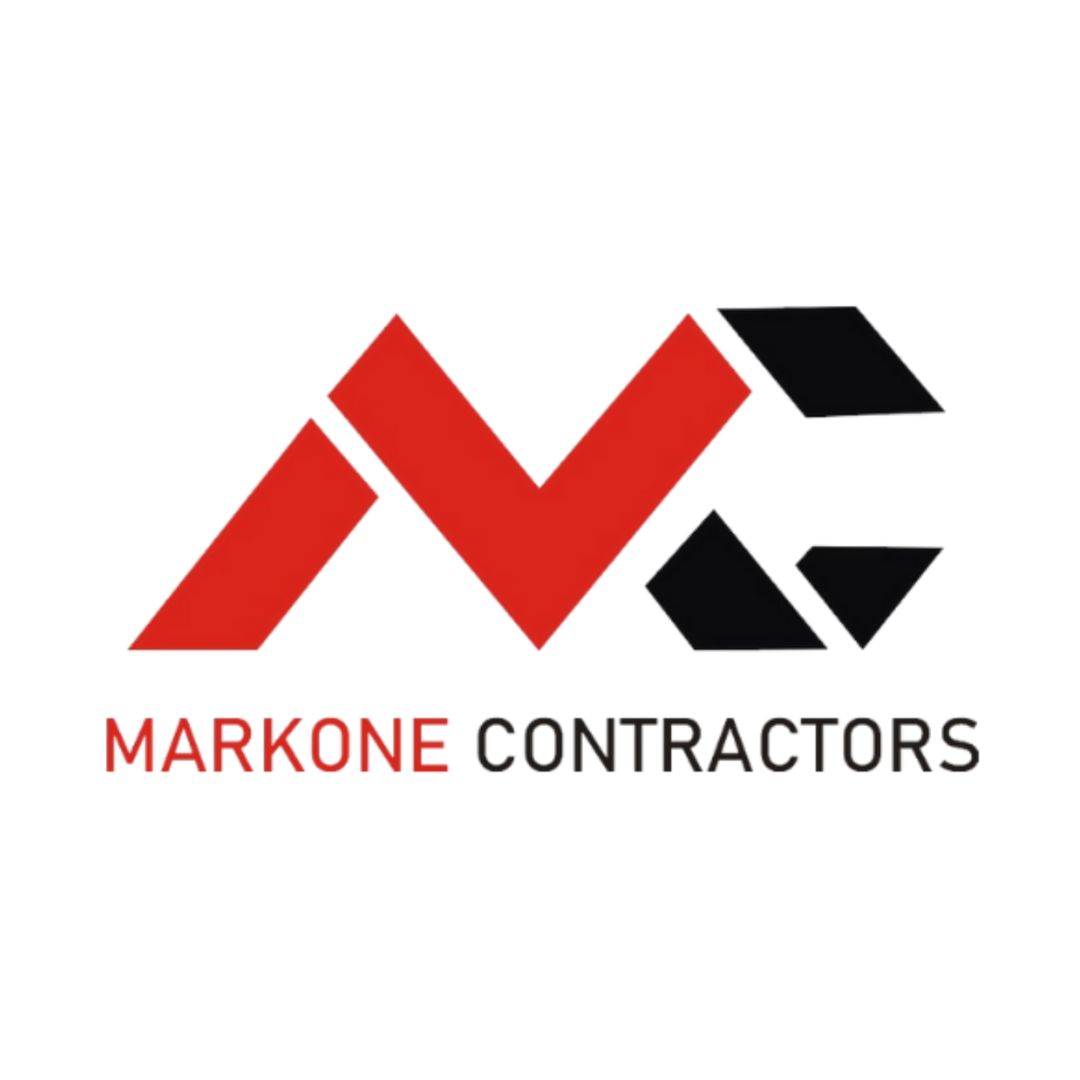

Process To Get Multi Family Construction Estimate Report
Here I am going to share some steps to get your multi-family construction estimate report.
-
You need to send your plan to us.
You can send us your plan on info@estimatorflorida.com
-
You receive a quote for your project.
Before starting your project, we send you a quote for your service. That quote will have detailed information about your project. Here you will get information about the size, difficulty, complexity and bid date when determining pricing.
-
Get Estimate Report
Our team will takeoff and estimate your project. When we deliver you’ll receive a PDF and an Excel file of your estimate. We can also offer construction lead generation services for the jobs you’d like to pursue further.

